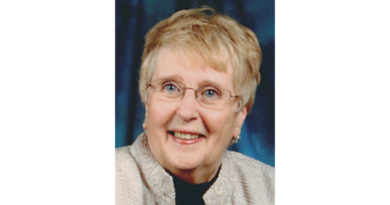Tribute: Virginia ”Ginny” Doctor 1950-2021
By Sue Careless
THE ANGLICAN CHURCH of Canada was shocked to learn that the denomination’s Coordinator of Indigenous Ministries died unexpectedly on May 26. The Rev’d Canon Virginia “Ginny” Doctor was 71.
Archbishop Linda Nicholls, primate of the ACoC, said in a public statement: “Ginny has served in Indigenous ministries with dedication and passion, committed to the work of reconciliation and the emerging self-determining Indigenous Church.
“Her deep faith, sense of humour and steadfast support for Indigenous rights is remembered with thanksgiving. Her death is a deep loss for the Anglican Council of Indigenous Peoples and Indigenous communities across Canada and in the United States.”
Doctor was a member of the Mohawk Nation Turtle Clan. Her mother was from the Six Nation Reserve in Ontario, but Ginny grew up on the Onondaga Reservation just south of Syracuse in New York State. She held dual America and Canadian citizenship.
Early in her career she was the Executive Director for the North American Indian Club of Syracuse. A fine athlete, she loved softball and played fast pitch for the Onondaga Red Jackets and the Syracuse Junior College Girls. She was also a softball coach for the younger girls of the Onondaga Nation and always had a championship team. She was an avid bowler and was the second woman in Syracuse to bowl a 300.
In 1993 she moved to Alaska where she did mission work based in Tanana, a village on the Yukon River west of Fairbanks. In the summer of 2001, she was ordained as an Episcopal priest. Eventually she was called to be Canon to the Ordinary for the Diocese of Alaska (serving military personnel in the state) during the ten-year tenure of the Rt Rev. Mark MacDonald, who is now the National Indigenous Archbishop of Canada. Doctor worked in Alaska for 18 years.
In 2011 she found an opportunity to work for the Anglican Church of Canada and moved to the Six Nations Reserve in Ohsweken, southeast of Brantford, Ontario.
That year in an online article entitled “Gospel Based Discipleship: A Way of Life Leading Us in Our Daily Walk with Jesus,” Doctor wrote:
“The First Nations People in the Anglican Church of Canada are moving with the Holy Spirit leading. Many say the self-determination movement began in 1967 when Charles Hendry wrote ‘Beyond Traplines,’ an examination of the relationship between the Aboriginal People and the Anglican Church of Canada. For me, it began in earnest August of 1993 when the Primate Michael Peers offered an apology on the behalf of the Anglican Church of Canada for the treatment of students in their residential schools. It was a moving experience, filled with stories of atrocities and tears. Once the apology was offered, the work took off.”
In the same article she observed:
“The Gospel builds relationships. Traditionally speaking, relations are one of our core values. When we sit in a circle of prayer and love, we build a community of faith. Do you think the disciples sat in a circle with Jesus? I do. I know one thing [is] fairly certain, the table of the Last Supper was not straight [as portrayed by da Vinci]; it was more u-shaped. When we are able to see everyone in the circle, we connect with their bodies, not necessarily eyes (for most Indians it is disrespectful to make eye contact). But the better we get to know each other the more eye contact we make…. Circles are strong because they connect everyone.…and if we put Jesus (or the Gospel) in the centre, think of the strength it can give and the relationships it can make.”
National Indigenous Archbishop Mark MacDonald who had worked alongside Doctor in both Alaska and Canada praised her leadership:
“[She] was always very effective at taking the dynamics and limitations of what the church system gave to Indigenous people, particularly women … and putting it together in such a way as to provide a way forward for people.”
He continued: “There is a large group of young Indigenous—and a number of non-Indigenous people as well—who have been mentored by her. She has a trail of people who will carry on her work over the years.”
She was also heavily involved in the World Council of Churches.
Doctor is survived by five of her six siblings and by her many nieces and nephews. Her funeral was broadcast live online from LaFayette, NY. Here in Canada a gospel jamboree held on June 12 honoured her memory as did the Tenth Sacred Circle held online July 14-17. For that gathering Doctor had scripted the video “Reclaiming Our Spiritual Wholeness: Our Journey to Self-Determination.”
At General Synod 2019 in Vancouver, Doctor told a press conference that her ancestors have been Anglican since the 1700s. “I’m still proud to be an Indigenous Anglican. But I am Indigenous first, then Anglican.”
There has always been a large Indigenous presence in the pews and ministry of the Anglican Church of Canada. Sadly, however, most of the Indigenous clergy have been and still are non-stipendiary, that is they do not receive any significant income for their ministry.
It is only in recent decades that the Indigenous presence has been felt in the church’s governing bodies such as General Synod and the House of Bishops. Currently one-quarter of the episcopal leadership of the denomination is Indigenous. Ginny Doctor was never a bishop but her priestly influence on the Anglican Church of Canada was considerable indeed. TAP




